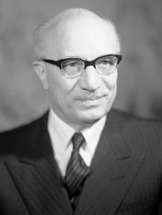Italian regional elections, 1975
| | ||||||||||||||||||||||||||||||||||||||
| ||||||||||||||||||||||||||||||||||||||
| ||||||||||||||||||||||||||||||||||||||
|
| ||||||||||||||||||||||||||||||||||||||
| Regional election results map. White denotes regions with a centrist (Christian Democratic) administration, Red denotes those with a leftist (Communist-Socialist) administration, Gray denotes those with an Autonomist administration. | ||||||||||||||||||||||||||||||||||||||
The Italian regional elections of 1975 were held on June 15. The fifteen ordinary regions, created in 1970, elected their second assemblies. Following the 1971 census, Piedmont, Veneto and Latium had ten more seats each.
Electoral system
The pure party-list proportional representation had traditionally become the electoral system of Italy, and it was adopted for the regional vote too. Each Italian province corresponded to a constituency electing a group of candidates. At constituency level, seats were divided between open lists using the largest remainder method with Droop quota. Remaining votes and seats were transferred at regional level, where they was divided using the Hare quota, and automatically distributed to best losers into the local lists.
Results
Summary of the results of all the lists reaching at least a tenth of the suffrages.
Nine Regional Councils elected ad administration led by a Christian Democracy's member with a centrist alliance, while three regions, Piedmont, Ligury and Latium, changed side adding themselves to the traditional leftist strongholds Emilia-Romagna, Tuscany and Umbria: PCI and PSI shared three presidencies each. It was a big victory for Communist leader Enrico Berlinguer.
The results were a shock for the DC which, even if remaining the majority party, saw the possibility of an historical defeat at national level in the next election. The secretary Amintore Fanfani was fired, and the government led by Aldo Moro began to find more and more difficulties, leading to an early end of the national legislature the following year.


